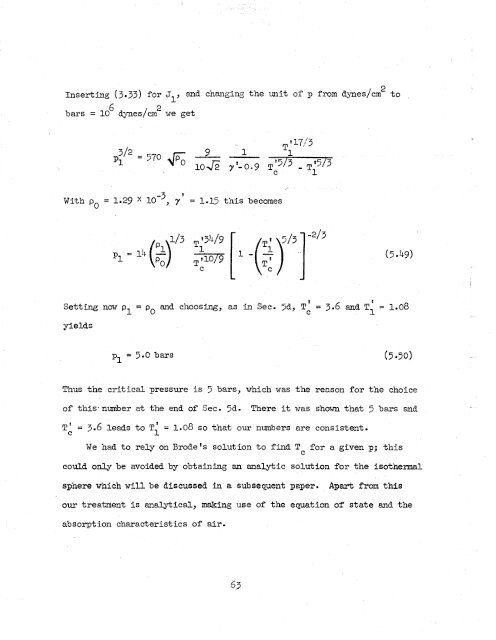Theory of the Fireball
Theory of the Fireball
Theory of the Fireball
You also want an ePaper? Increase the reach of your titles
YUMPU automatically turns print PDFs into web optimized ePapers that Google loves.
Inserting (3.33) for JIJ and changing <strong>the</strong> unit <strong>of</strong> p from dynes/cm 2 to<br />
6 2<br />
bars = LO dpes/cm we get<br />
Setting nar p1 = po and C ~ O O S ~ as ~ , in Sec. 5d, Tc 1 = 3.6 and T1 r = 1.08<br />
yields<br />
p1 = 5.0 bars<br />
Thus <strong>the</strong> critical pressure is 5 bars, which was tne reason for <strong>the</strong> choice<br />
<strong>of</strong> this, number at t'ne end <strong>of</strong> Sec. 5d. Tnere it vas shown that 5 bars and<br />
T' = 3.6 leads to Ti = 1.08 so that our numbers are consistent.<br />
C<br />
We had to rely on Brode ' s solution to find Tc for a given p; this<br />
could only be avoided by obtaining an analytic solution for <strong>the</strong> isotneml<br />
sphere which will be discussed in a subsequent paper. Apart from this<br />
our treatment is analytical, making use <strong>of</strong> <strong>the</strong> equation <strong>of</strong> state and <strong>the</strong><br />
absorption characteristics <strong>of</strong> air.
















